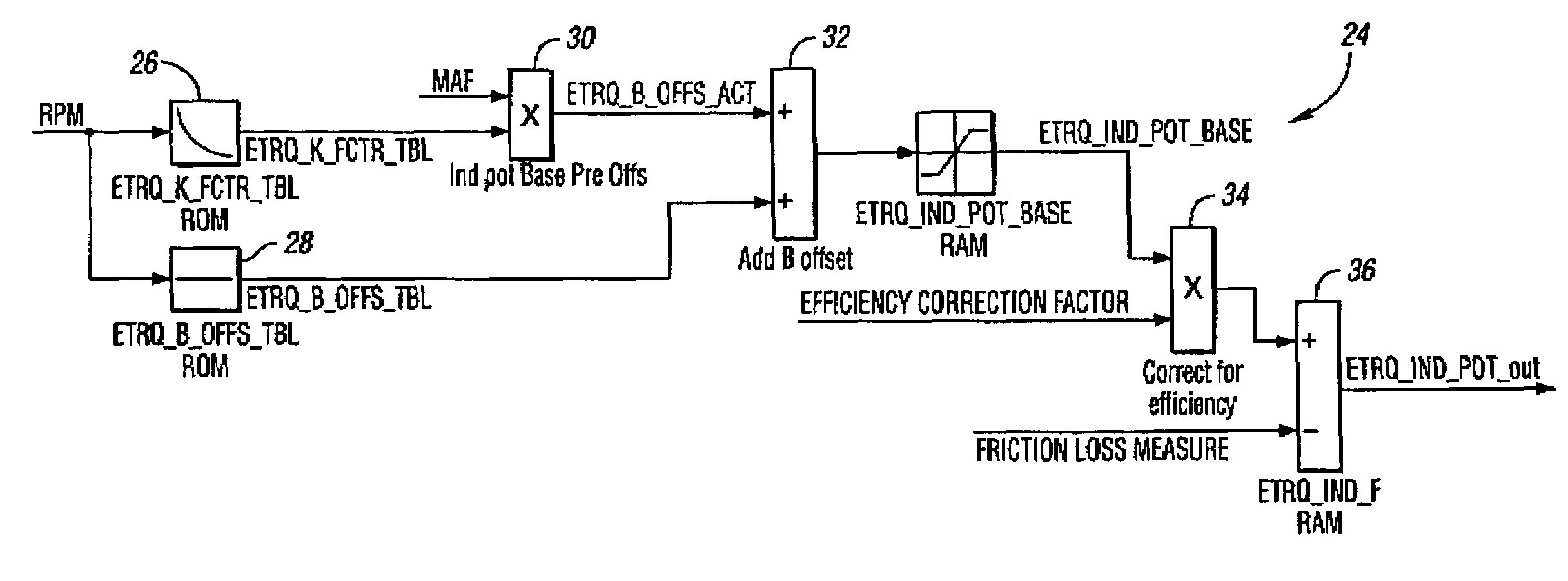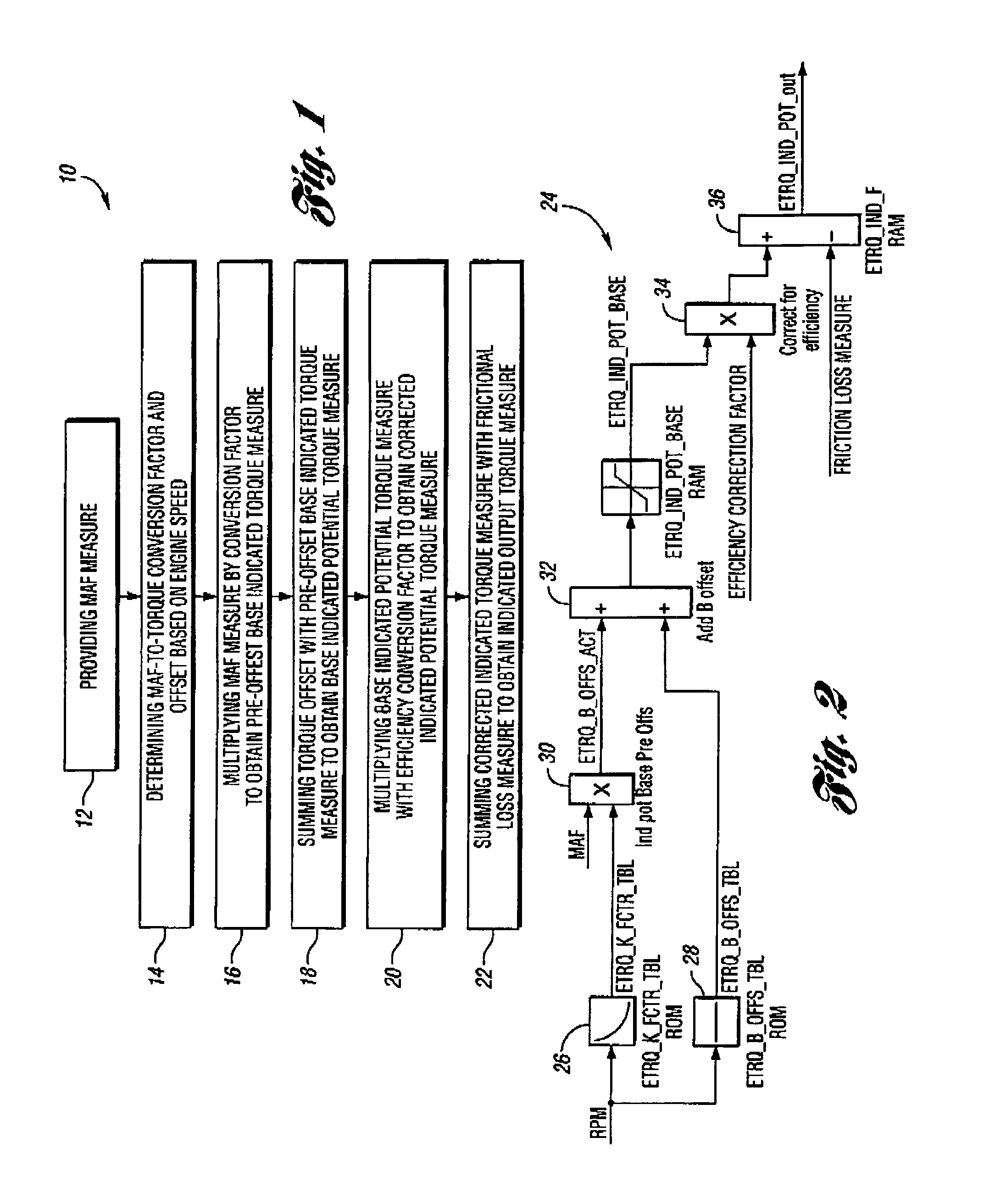Airflow-based output torque estimation for multi-displacement engine
a multi-displacement, airflow-based technology, applied in the direction of machines/engines, electric control, instruments, etc., can solve the problems of increasing the complexity of the calculations from which the maximum engine output torque is determined, and generating unacceptable levels of vehicle noise, vibration, harshness (nvh) determinations,
- Summary
- Abstract
- Description
- Claims
- Application Information
AI Technical Summary
Benefits of technology
Problems solved by technology
Method used
Image
Examples
Embodiment Construction
[0013]A method 10 for estimating an output torque generated by a multi-displacement internal combustion engine operating in a partial-displacement mode that is, for example, particularly well-suited for use in controlling a “slow” reactivation of a given deactivated engine cylinder, is generally illustrated in FIG. 1. While the invention contemplates any suitable hydraulic and / or electro-mechanical systems for deactivating the given cylinder, including deactivatable valve train components, an exemplary method is used in controlling an eight-cylinder engine in which four cylinders are selectively deactivated through use of deactivatable valve lifters as disclosed in U.S. patent publication no. US 2004 / 0244751 A1, the teachings of which are hereby incorporated by reference.
[0014]As seen in FIG. 1, the method 10 generally includes providing, at block 12, a first measure representing a mass air flow (MAF) through the engine's intake manifold based, for example, on detected instantaneous...
PUM
 Login to View More
Login to View More Abstract
Description
Claims
Application Information
 Login to View More
Login to View More - R&D
- Intellectual Property
- Life Sciences
- Materials
- Tech Scout
- Unparalleled Data Quality
- Higher Quality Content
- 60% Fewer Hallucinations
Browse by: Latest US Patents, China's latest patents, Technical Efficacy Thesaurus, Application Domain, Technology Topic, Popular Technical Reports.
© 2025 PatSnap. All rights reserved.Legal|Privacy policy|Modern Slavery Act Transparency Statement|Sitemap|About US| Contact US: help@patsnap.com


